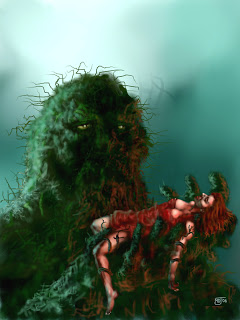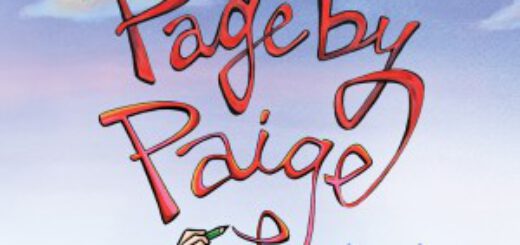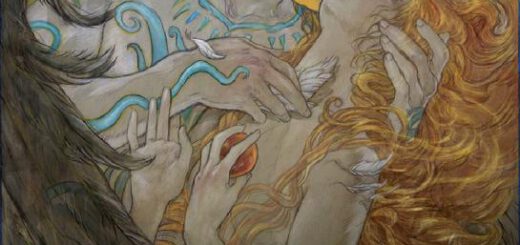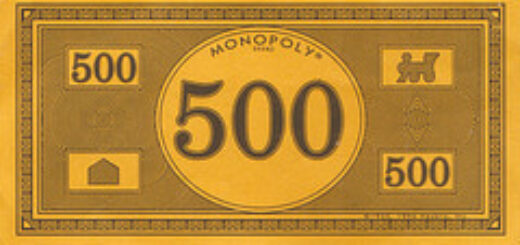Tagged: art
Review: Page by Paige
 [[[Page by Paige]]]
[[[Page by Paige]]]
By Laura Lee Gulledge
192 Pages, Amulet Books, $16.95
Thankfully there are a growing number of graphic novels for young adults about subjects way beyond fantasy, science fiction, and superheroics. A new generation of creators are sharing their visions or lives (or both) with us and everyone benefits. The latest such offering is Page by Paige, produced by scenic painter Laura Lee Gulledge. Paige is a stand-in for Laura, whose family has relocated from Virginia to New York and being the new teen in high school is a rough experience. There’s the awkwardness of coming in during the school year coupled with navigating the courses, the hallways and the cliques. Fortunately for Paige, she is accompanied by her sketchbook and in private, she pours out her fears, anxieties, and hopes. She finally meets someone who is drawn to Paige, noticing the newcomer is reading an issue of Locas. Jules befriends Paige and introduces her to brother Longo and their friend Gabe. Suddenly, Paige has a circle of friends.
As Paige gets to know them, she creeps towards revealing her true self, that of a budding artist. Watching her crawl from her cocoon to become a beautiful red-headed butterfly is a joy. Better yet, once her friends see how true talents, they become her accomplices in beautifying their surroundings through Paige’s art, which literally leaps off the page.
The book is a lovely mix of Paige’s escapades and her sketchbook, providing insight and commentary into the first months of her new life in the big city. There’s absolutely nothing larger than life, but the canvass is a large one. There’s friendship, some romance, studying in the city’s great art museums, relating to one’s parents, and expressing one’s self artistically. Page by page, ahem, we are treated to inventive layouts and designs as we get insightful glimpses into Paige’s conscious mind.
Gulledge is an honest artist, laying out her fears and dreams out for all of us to examine. She’s very naturalistic in her character designs and makes certain every character has a distinctive voice. Paige herself is loudest, of course, and readers will truly enjoy getting to know this character.
The book may have just been released but it has already been nominated for a deserving spot on the Young Adult Library Services Association’s Great Graphic Novels for Teens list. This comes highly recommend to people seeking something fresh and different.
Twitter Updates for 2011-03-15
- RT @Gurroo: I'm selling original comic art from Darwin book to raise money for Japan Quake Fund http://bit.ly/hRfI26 please RT. #
Spectrum 18 award winners: Rebecca Guay and David Palumbo win twice
It’s always nice to see comic artists getting respect in places outside of the clubhouse, and so they were as the eighteenth annual Spectrum awards for excellence in science fiction and fantasy art were chosen Saturday evening. Spectrum is widely considered one of the most influential art awards in the genre.
Comics
Gold: Rebecca Guay for A Flight of Angels
Silver: David Palumbo for Sleep
Silver: Joao Ruas for Fables #96 cover
Concept Art
Gold: Kekai Kotaki for Riven Earth
Silver: Tomaz Jedruszek for Legends of Norrath
Dimensional
Gold: David Meng
Silver: Akihito
Books
Gold David Palumbo for God’s War
Silver: Dan Dos Santos for White Trash Zombie
Advertising
Gold: Ryohei Hase for Narco Americano
Silver: Sam Weber for The Fisherman’s Wife
Editorial
Gold: Andrew Jones for Share One Planet
Silver: Brom for Redd Wing
Institutional
Gold: Richard Anderson for Knight March
Silver: Donato Giancola for Mind Machine
Unpublished
Gold: Rebecca Guay for Pandora
Silver: J. S. Rossbach for White Heat
Silver: Scott Brundage for Tigers Have Striped Skin
Awards were chosen by jury members Nathan Fox, Gregory Manchess, Shena Wolf, Jarrod and Brandon Shiflett, Boris Vallejo, and Julie Bell.
Photos and video of the judging can be seen on the Spectrum website. Congratulations to all the artists!
via Announcing the Spectrum 18 award winners. | tor.com | Science fiction and fantasy | Blog posts.
National Graphic Novel Writing Month Day 30: Can Twitter Make You A Better Comic Book Writer?
 Collecting all the Twitter posts we did earlier today. If you’re not following the ComicMix Twitter feed, tsk tsk tsk…
Collecting all the Twitter posts we did earlier today. If you’re not following the ComicMix Twitter feed, tsk tsk tsk…
I have written before about the danger of distractions while writing. And Twitter can become a huge timesink.
But Twitter can also actually help improve your comic writing, if you use it properly and understand how and why.
Denny O’Neil had a rule: in a standard six-panel page, there should be no more than thirty-five words per panel.
Two hundred and ten words of dialogue and captions. You have to write tight with no room for error.
 Twitter forces you to write dense snippets to carry the maximum impact. Poetry in brevity.
Twitter forces you to write dense snippets to carry the maximum impact. Poetry in brevity.
The math works; thirty-five three letter words with spaces is one hundred and forty characters. Convenient.
Yes, the most common word length is five letters. Err on caution’s side. The discipline’s good for you.
If you must, pretend each tweet is one speaker in a two person conversation. Neither should over-dominate.
Besides, you won’t always have a six panel page. Nine panels breaks to twenty-two words each.
So writing short, memorable, natural tweets can help you write comic captions and dialogue. But there are catches.
First: get in the habit of writing numbers as words. Numerals are rarely used.
Second: no Twitter-speak abbreviations. Write out the full words. Contractions are okay.
Third: don’t repeat what the art already tells the reader. Good advice at any time.
There’s a reason a Tweet looks like a word balloon. People already think that way. Use it.
Remember: you can follow all the NaGraNoWriMo posts here!
National Graphic Novel Writing Month Day 21: Nobody Likes Ten Pages Of Talking Heads
Day 21, and I’m in hell. Let me give you my particular problem and share my pain with you.
The story for my graphic novel hinges on a bunch of financial manipulations. I’m doomed.
Why? Comics is a visual medium. That means the writer has to find a way to make the story visually interesting. I have to make a story about high finance discernable in pictures.
Is there a way to do this? Yes, there is– you show the characters, and you show them doing things. Show the impact of what’s going on. And as a writer, this means that you have to describe what you want to see on the page so that the artist can draw it.
I was lucky enough to take art classes with John Buscema when I was a young lad, and he would use his book How to Draw Comics the Marvel Way
as his textbook. There was one section that stuck with me, showing how to tell a scene with just two people in it dramatically.
First, the bland version:

And now the dramatic version: (more…)
NaGraNoWriMo Day #1: Writing Resources
 Are you in for National Graphic Novel Writing Month? We hope so. And because we’re generous people, we thought we’d give you some reading material to help you start on your masterpiece.
Are you in for National Graphic Novel Writing Month? We hope so. And because we’re generous people, we thought we’d give you some reading material to help you start on your masterpiece.
- Understanding Comics: The Invisible Art
by Scott McCloud - Making Comics: Storytelling Secrets of Comics, Manga and Graphic Novels
by Scott McCloud - Reinventing Comics: How Imagination and Technology Are Revolutionizing an Art Form
by Scott McCloud
The books above could be considered the holy trinity to the world of sequential art. Scott McCloud presents how to write and build a comic book, by deconstructing the art form into its basic principles and components. We can’t recommend this books enough. And once you get through those, consider:
- Graphic Storytelling and Visual Narrative
by Will Eisner - Comics and Sequential Art: Principles and Practices from the Legendary Cartoonist
by Will Eisner
Before Scott McCloud, there was Will Eisner… the legend that spawned an industry. If you don’t know who Will is… we recommend you just buy these books now and thank us later. And if you’ve finished these, why not take a gander at:
- Writing for Comics and Graphic Novels
by Peter David - The Complete Book of Scriptwriting
by J. Michael Straczynski - Alan Moore’s Writing For Comics Volume 1
by Alan Moore
Living legends in their own rights, this trio of books could be considered the followup courses after you’ve polished off both Eisner and McCould’s contributions. All of these books will help you, and are available at decent comic
book stores, through your local library, or by following the links to
purchase through Amazon.
After you’ve boned up on your structure, have your basic plot in mind, and your word doc opened… why not get a graphic novel that gives you access to the final working script, so you can compare structures! We recommend:
- The Sandman Vol. 3: Dream Country
by Neil Gaiman, which includes the script to “Calliope”. - Absolute Watchmen
by Alan Moore and Dave Gibbons, which includes some sample script pages for you to peruse.
We also have to point to the excellent work of Tim Simmons and the Comic Book Script Archive, where you can see a number of scripts in various styles and levels of development. (We’ll probably have a few more to add by the time we’re done.)
What books do you recommend? Sound off in the comments.
Obama and Palin Meet… Archie Andrews?

The fine folks in sunny Riverdale have a pair of powerful visitors, sweeping into town later this year. Scratch that. The fine folks in Riverdale have one powerful visitor and one ex-governor / tea-party activist sweeping into town later this year. Why? Because student politics is a national level issue when it’s Archie Andrews vs. Reggie Mantle! The fate of Riverdale High, and by proxy, all of our nation comes down to who will take over the student body. Think about it. Unemployment is still rampant throughout the states. The war in Iraq is over, but we’re swimming in debt over it. The mighty dollar isn’t what it used to be. But it all will come down to who will represent the student body… everyone’s favorite every-kid, Archie, or that rule-breaker, Mantle “The Magnificent”. While we’re not even sure how the President and Mrs. Palin will find Riverdale, given that it, like Springfield of The Simpsons fame, exists devoid of a literal state address… we can be positive though, that the visit will make history.
Hitting comic book shelves in late December, and then January, the Obama / Palin two-part storyline should draw politically minded fans to the rack quicker than Jughead dashes to Pop Tate’s on new flavor day. We here at ComicMix wanted to share the pair or covers for the December/January solicits. Give a gander at our sitting President and the media’s favorite Hockey Mom as they shed their animosity for one another, all over a chocolate malt.
ARCHIE #616
“Campaign Pain” Part 1.President Barack Obama and famed politician Sarah Palin get involved as Student Government campaigns spiral out of control at Riverdale High! The race between Archie and Reggie gets hot as campaign chaos reaches to the top, forcing an impromptu visit from these big-name politicos, who get pulled into the fray!
Script by Alex Simmons, art by Dan Parent, Jack Morelli, and Digikore Studios. Cover art by Dan Parent and Tito Pena. On Sale at Comic Shops: DEC 22, 2010, Newsstands: Week of JAN 4, 2011
ARCHIE # 617
“Campaign Pains,” Part 2When President Obama and famed politician Sarah Palin arrive, Riverdale becomes the center of a national crisis! Archie and Reggie have each claimed support from one of these political powerhouses, but they don’t! Now Riverdale is in chaos and when the Secret Service gets involved it only gets worse!
Script by Alex Simmons, art by Dan Parent, Jack Morelli and Digikore Studios. Cover art by Dan Parent
On Sale at Comic Shops: 1/26/11, Newstands: Week of FEB 8, 2011
Webcomics You Should Be Reading: “The Gutters”
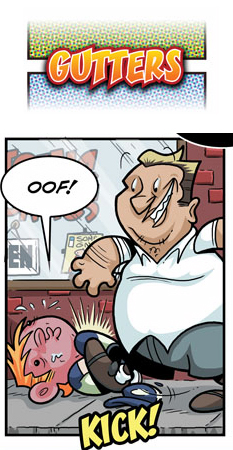 Gentle reader, I know it’s been an eon and a half since last I told you to dust off that bookmark button. But to be honest, I’ve been buried in the same set of webcomics for a long time now, with nothing piquing my interest as such… until now. Found literally by happenstance, I bring to you today a webcomic that is not like any other I’ve brought to you thus far. I bring to you… The Gutters.
Gentle reader, I know it’s been an eon and a half since last I told you to dust off that bookmark button. But to be honest, I’ve been buried in the same set of webcomics for a long time now, with nothing piquing my interest as such… until now. Found literally by happenstance, I bring to you today a webcomic that is not like any other I’ve brought to you thus far. I bring to you… The Gutters.
Produced and written by Ryan Sohmer, the same dude that puts out a former Webcomic You Should Be Reading, Least I Could Do, The Gutters is truly a unique webcomic beast. Instead of a singular cast, The Gutters uses today’s comic books as fodder for content. Expressing a gripe about “One More Day” or “Blackest Night,” or offering a more general comics in-joke, the strip skewers just about everyone in the industry… fictional or not! Instead of a single artist, The Gutters employs the services of a multitude of industry pros. Past strips has been drawn by the likes of Eugene JjAR, cartoonist Chris Jones, comic book guru Bill Sienkiewicz, and webcomic god Scott Kurtz. Even Least I Could Do‘s Lar deSouza lends his hand on occasion. At the end of the day, the combination of a rotating art cast with Sohmer’s wit and criticism of the comic industry equals a damn funny webcomic that had the Unshaven Comics crew doing spit takes while we roamed through the archives. Although the comic is only 40 strips old, it offers a gold mine of jokes.
Normally, I peruse the wikipedia of the “About Us” page to pick up a little backstory. Sadly, The Gutters is far too new and awesome to have garnered an entry yet. From what I can glean from the blogs, though, the project is pretty straightforward. According to Sohmer:
“In brief, Gutters is a series of standalone pages that parody the
comic book industry and the heroes and characters that dwell within.
Think of it as an editorial cartoon targeting comic books, and you’ll
understand where we’re going with it.
While I’ll be writing Gutters, Lar will be the art director with Ed
Ryzowski serving as colorist. As for who will be doing the actual art,
well, that’s where things get interesting (and slightly different).
Rather than have one artist pencil each page, we elected to have a
rotating roster of professional artists, among them some giants in the
comic book industry alongside new and emerging talent. This way, in
addition to what I hope will be a humorous comic, Gutters will also be
an ongoing showcase of art.”
Labor Day and the Cost Of Doing Business in Comics
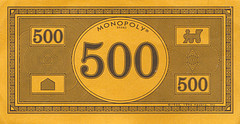 Five hundred dollars.
Five hundred dollars.
When people talk about putting regular, old-fashioned comic books online, keep that $500 in mind.
That’s about how much it costs for an average page of comic book art, in terms of labor. Figure $100 for the writer, $150 for the penciller, $130 for the inker, $90 for the colorist, and $30 for the letterer. Those numbers go up and
down depending on talent and publishers, but that’s a nice round number for us to work with.
Let’s consider another number: 22. That’s the average page count for a monthly comic book story. It’s also the number of pages most average pencillers can produce a month. Neat coincidence.
Now start multiplying. That means a penciller will make $3300 a month, or $39,600 a year. With covers, round that up to $42 grand a year. Not a lot of cash there. And the penciller’s the highest paid talent on the book. A writer will make $2200 a month, and nobody pays him to write covers. He’ll probably have to write two books a month to make his nut. And so on.
But if you’re expecting professionals to create your comics, that’s what you’ll have to spend.
Graphic novels? From scratch? You’re looking at about 120 pages minimum– that’s $60,000 in labor costs. Unless you’re economizing and doing a lot of the work yourself, that’s going to almost insurmountable unless it’s commissioned by somebody– most writers don’t have a spare $48,000 to spend on an outside artist. This, of course, is one reason why many “literary” graphic novels are solo jobs– David Mazzuchelli, Darwyn Cooke, Alison Bechdel, Brian Fies, et cetera– because the economics simply aren’t there to support five hungry mouths.
Any proposal for getting books in print in paper– or publishing online– has to keep those numbers in mind. You either have to generate enough money to cover those upfront costs, or find some way to mitigate or reduce them.
So how would you do it? (And no, you can’t pay in Monopoly money.)




